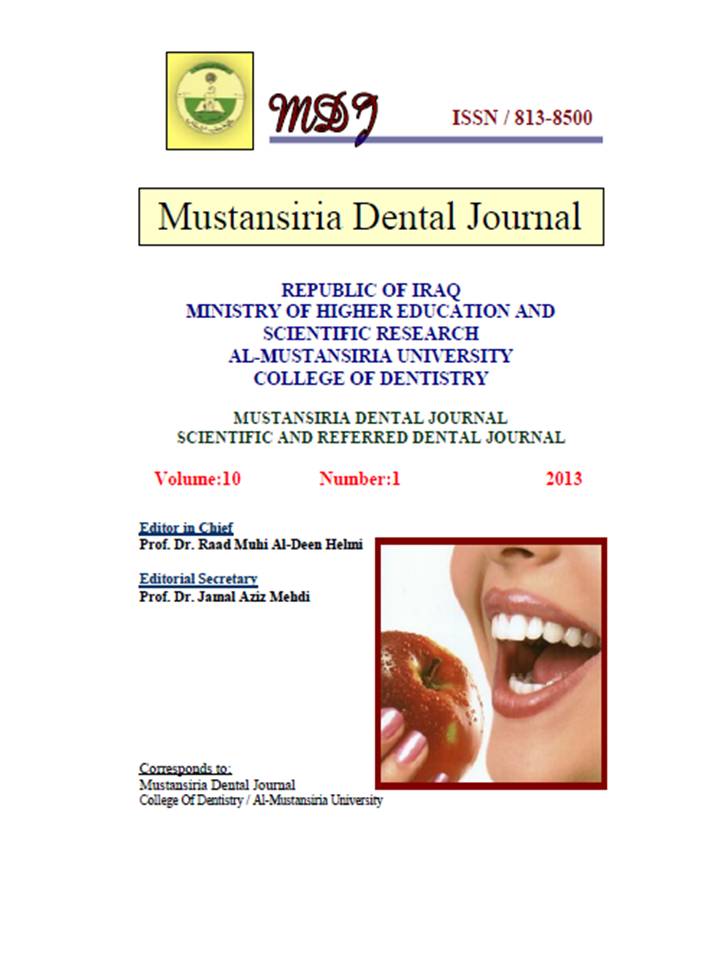Comparisons the microhardness of different cured acrylic denture base systems after subjected to chemical cleaning solutions
DOI:
https://doi.org/10.32828/mdj.v10i1.188Keywords:
Key wards: Disinfectant, denture cleansers, surface hardness, acrylic denture baseAbstract
In selecting chemical cleaning solutions for dental prostheses, compatibility
between them and the type of denture base materials must be considered to avoid
adverse effects on the hardness of the acrylic resin in different curing systems. This
study aimed to compare the effect of different disinfectant and denture cleanser on the
surface hardness of the light and heat cured acrylic resin materials. Eighty specimens
are made from two different denture base materials. Forty specimens are made of
light cured acrylic and forty specimens are made of heat cured acrylic resin. Each
material is subdivided into four subgroups according to the type of the disinfectant
(0.12% chlorhexidine digluconate, 0.5% sodium hypochlorite), the denture cleansers
(Corega) and compared to the distilled water as control group. The surface hardness
test is measured for each specimen to show the effect of each chemical cleaning
solution on the light and heat cured denture base hardness. The results of the present
study showed non significant differences in the surface hardness comparing between
the two curing systems light and heat cured acrylic resin. Also there are non
significant differences in the surface hardness when different disinfectant and denture
cleansers have been used in comparison to the distilled water. It was concluded from
this study that the hardness of acrylic materials is not affected by immersion in any
type of disinfectant and denture cleanser as well as it is found that there is no different
in the hardness of the light cured when compared to the heat cured acrylic denture
base.

Downloads
Published
Issue
Section
License
The Journal of Mustansiria Dental Journal is an open-access journal that all contents are free of charge. Articles of this journal are licensed under the terms of the Creative Commons Attribution International Public License CC-BY 4.0 (https://creativecommons.org/licenses/by/4.0/legalcode) that licensees are unrestrictly allowed to search, download, share, distribute, print, or link to the full texts of the articles, crawl them for indexing and reproduce any medium of the articles provided that they give the author(s) proper credits (citation). The journal allows the author(s) to retain the copyright of their published article.
Creative Commons-Attribution (BY)








